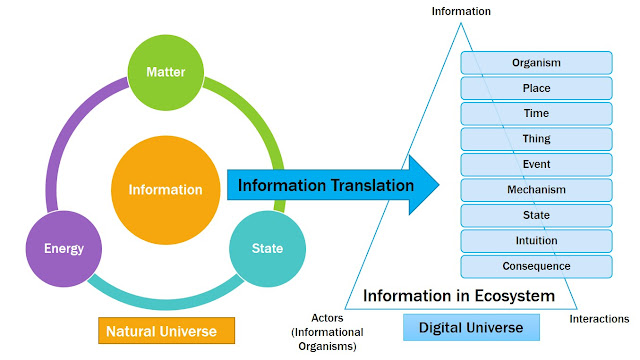Crowd-Sourced Information Management Challenges
Information management is one of the most important “Business Capabilities” of government emergency agencies (EA) in preventing, preparing for, responding to and recovering from disasters. EA have shown a significant interest in the use of cloud-based social media such as Twitter and Facebook for crowd-sourcing, managing and distribution of disaster related information. The effective management of crowd sourced information (via social media) is all about being proactive in recognising and addressing the “Crowd-Sourced Information Management Challenges” before they turn into problems. This article presents a template based tool “Crowd Sourced Information Management Challenges’ Assessment Matrix”. This assessment tool can be useful for government agencies in assessing crowd-sourced information management challenges and developing a proactive strategy for the use of social media for crowd-sourcing, managing and distribution of disaster related information.
Major Categories
|
Key Challenge Categories
|
Likelihood
|
Impact
|
Comments
|
Right Information
|
1.False Information and Rumours
|
How to determine whether the crowd sourced information is correct or not?
| ||
2.Bad Information Patterns
|
How to handle if someone maliciously generates a pattern of information to deliberately disturb the crisis planning, response and recovery?
| |||
Right People
|
3.Changing Demographics
|
How to determine whether the young people are living in the affected area and whether they know to use the social media?
| ||
4.Information Source Trust
|
How to determine whether the information source is trustworthy or not?
| |||
Right Time
|
5.Information Latency
|
How to handle delays in the activity of raw information translation from different tweets and then re-tweeted (of the synthesized message) to their followers?
| ||
Financial
|
6.Information Overload
|
How to effectively handle overloaded BigData coming via social media streams and getting real business value out of it (e.g. opportunity cost)?
| ||
Human Resources
|
7.Additional Resources and Supervision
|
How to manage the need and cost of additional staff or resources 24/7 for monitoring, updating, correcting and preventing the posting of inaccurate information via social media?
| ||
8.Performance Implications
|
How to manage staff struggling to keep up with overloaded information, impact on their performance and work practices?
| |||
Infrastructure
|
9.Information Unavailability
|
How to handle information unavailability due to power failure or loss of mobile phone or internet connection or permanent/ temporary service shut down during a crisis?
| ||
Integration
|
10.Information Integration
|
How to handle integration between the unstructured BigData real-time streams via social media and legacy system relational database?
| ||
Interoperability
|
11.Lack of Information Interoperability
|
How to handle information interoperability issues between the cloud-based social media and legacy system?
| ||
Privacy
|
12.Crowd Sourced Information Comingling
|
How to handle the possibility of commingling of crowd sourced information of an entirely different crisis if the information for both crises is stored in a single cloud-based multi-tenant environment?
| ||
Security
|
13.Malware
|
How to handle if malicious software managed to view and modify the crowd sourced information packets in transit?
| ||
14.Group Attack
|
How to handle a brute force attack that may manipulate the encrypted user social media account information and their broadcasted messages or tweets?
| |||
15.Distributed Denial-of-Service Attack
|
How to handle an attack targeting specific crowd-sourcing websites by flooding a web server with repeated tweets or messages?
| |||
Scalability
|
16.Content Constraint
|
One tweet allows only a maximum 140 characters, so is that sufficient to disseminate a message? Is it scalable?
| ||
Resilience
|
17. Social Media “self-victims”
|
What to do if the social media service suffers due to a disaster and people dependent on social media may not be able to access the information posted on the social media site?
| ||
Policy
|
18.Lack of Social Media Monitoring Strategy
|
What if you do not have a clear strategy to use and monitor the social media in a specific situation?
| ||
Process
|
19.Verification and Validation
|
How to verify and validate the information sourced via social media streams?
| ||
20.Overwhelming Streams of Crowd Sourced Information
|
How, when and how often the streaming of crowd sourced data between the social media and legacy system should occur?
| |||
Authority
|
21.Authority Confusion
|
What if social media providers change their terms and polices at their own will?
| ||
22.Ownership Confusion
|
Who owns the information residing in the cloud-based social networks - community, social media vendor, emergency services?
| |||
23.Unauthorised Information Sharing
|
Who has rights to grant permissions to share and secure the information sourced via social media (e.g. who may create or close threads for communication in the social media)?
| |||
24.Multiple or Too Many Sources of Information
|
Which media website or thread to follow, and what if someone shutdown the popular thread?
|
Crowd Sourced Information Management Challenges’ Assessment Matrix V1.0
(Copyright Dr. Asif Q. Gill 2012)
(Copyright Dr. Asif Q. Gill 2012)
Assessment Guide:
· Likelihood is the possibility of a challenge that can affect an emergency agency.
· Impact is how strongly the challenge can affect an emergency agency.
· Assess each key challenge and give score from 1 to 10 (e.g. from low to high) for the two dimensions of likelihood and impact.
· See the comments box for more hints.
Please let me know if you want more detailed version of this template.
Thanks



Comments
Post a Comment